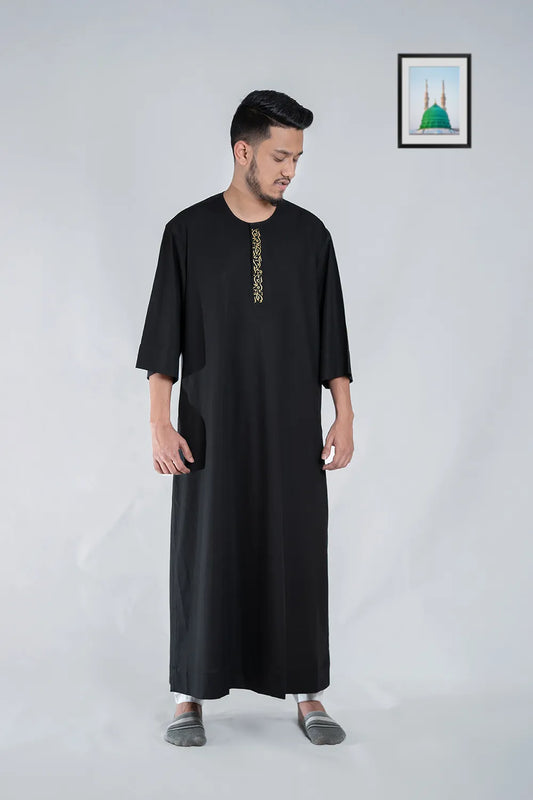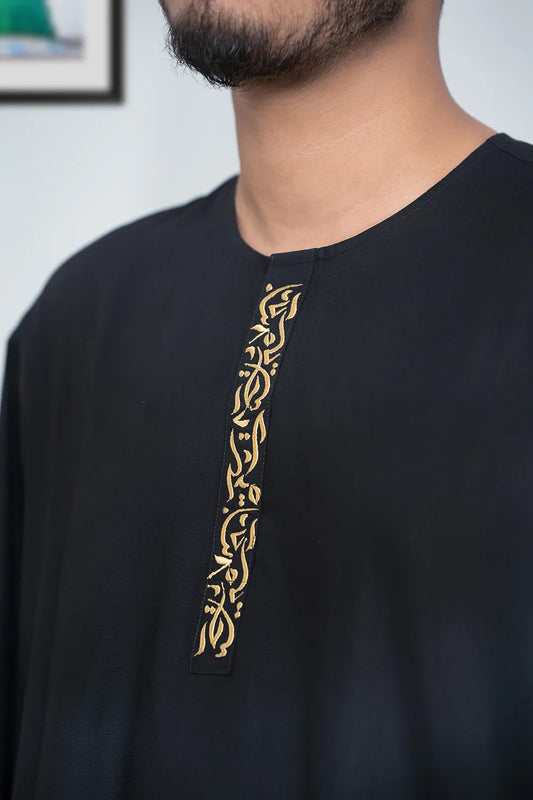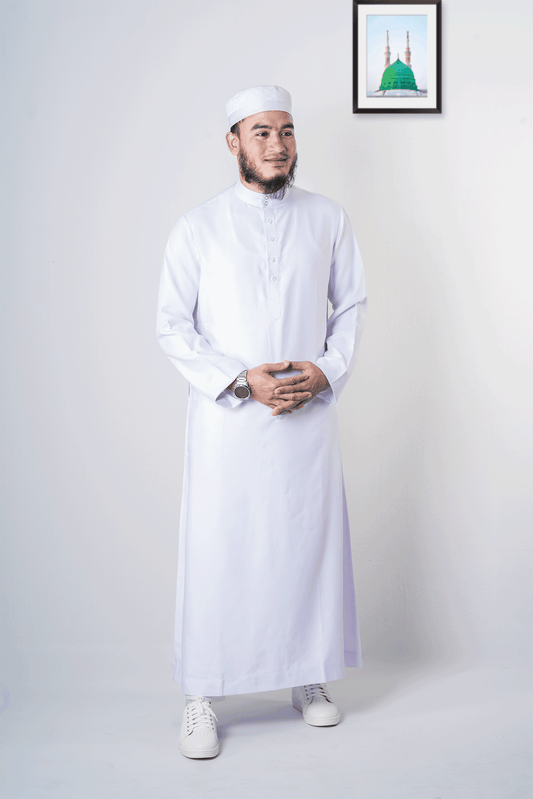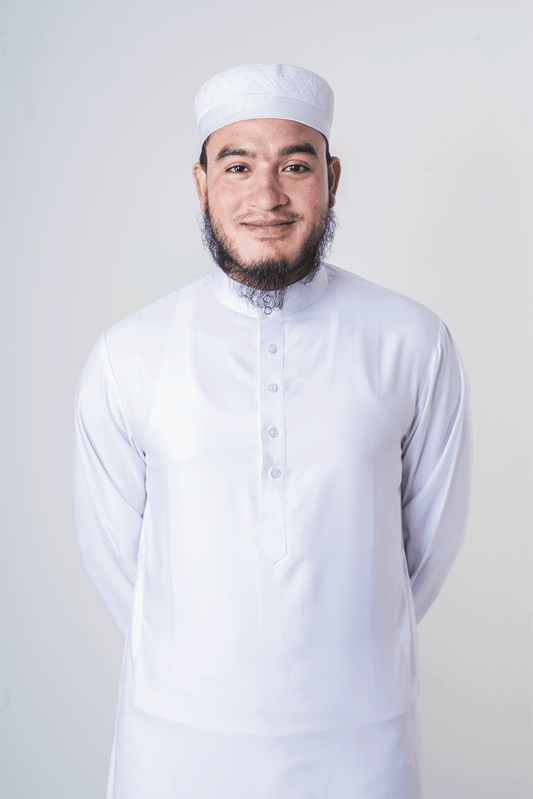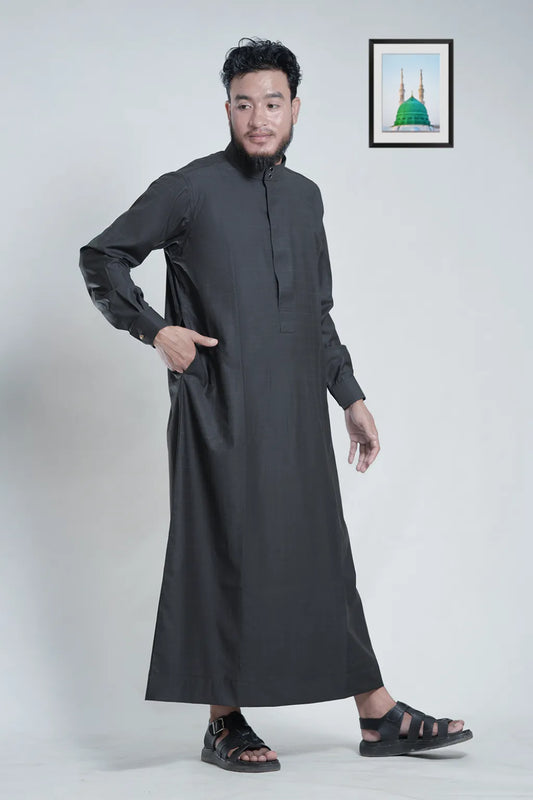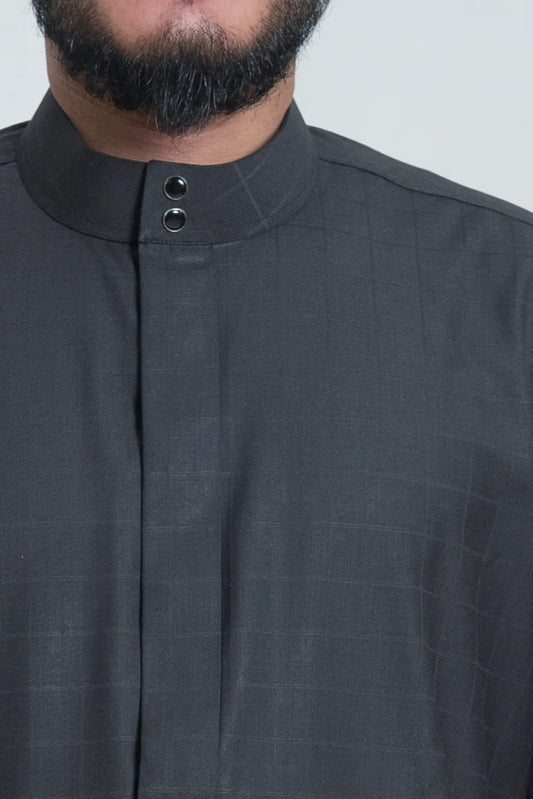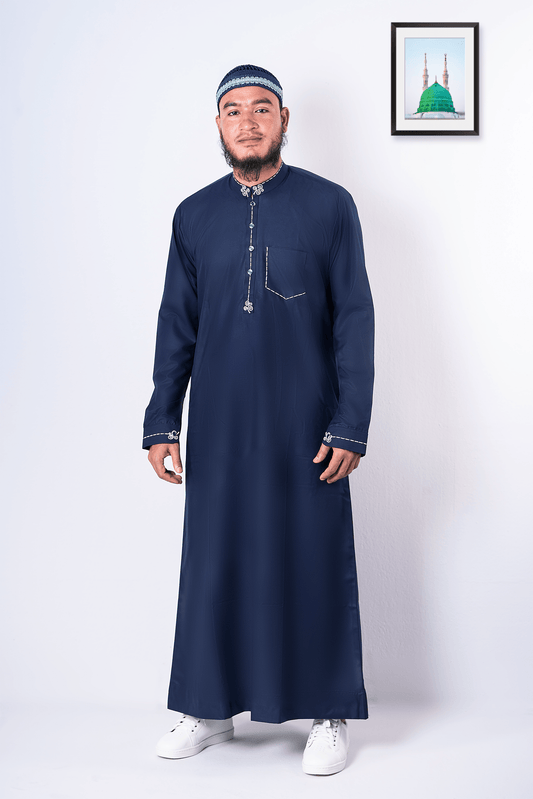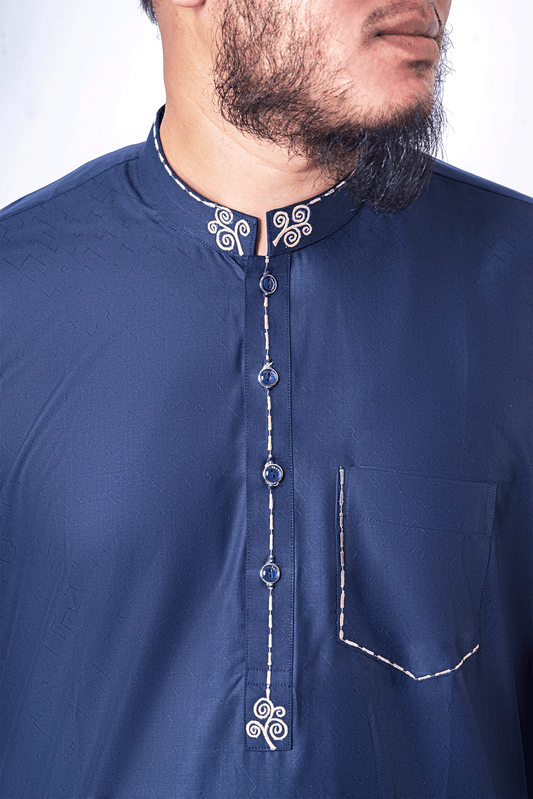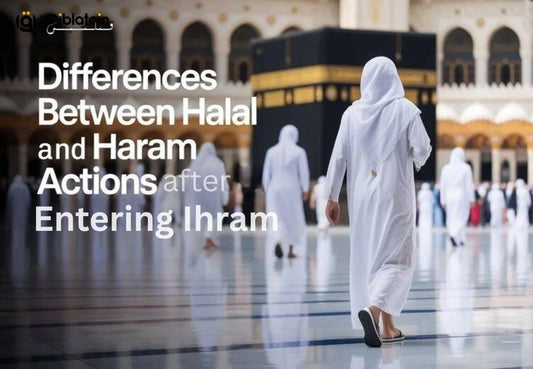Since understanding the Islamic dress code for men is essential for performing prayers correctly, this article will focus on Islamic clothing for men in Islam, particularly in the context of prayer. The question often arises whether wearing a thobe is necessary or if regular clothing is sufficient. This article clarifies the essentials of the Islamic dress code for prayer and how the thobe fits into this framework, incorporating insights into cultural variations, Islamic etiquette, and the spiritual significance of attire.
What is the Islamic Dress Code for Men?
In Islam, the primary requirements for prayer dress for men are cleanliness and modesty. The essentials for acceptable prayer dress include:
1. Coverage of Awrah:
For men, covering the awrah during prayer is a key requirement in Islam. Awrah refers to the area of the body that must be covered for prayer to be valid. For men, the awrah is defined as the area between the navel and the knees. This area must remain covered throughout the prayer. Covering the awrah is considered the minimum fardh (obligation) for the prayer to be valid.
While the minimum requirement is to cover from the navel to the knees, there are additional recommendations that enhance the modesty of one’s attire during prayer. For example, it is recommended to cover the upper body, including the shoulders, to show further respect and modesty while standing before Allah (SWT).
The Prophet Muhammad (peace be upon him) emphasized this in Sahih al-Bukhari 360:
Whoever prays in a single garment must cross its ends (over the shoulders).
This indicates that while covering the awrah is obligatory, covering more of the body is encouraged to enhance the dignity of the prayer.
Clothing should be loose-fitting to avoid distraction during prayer. Garments like thobes, sarongs, or long shirts meet the requirement and promote a comfortable, respectful posture.

Tailor a thobe to fit your size

No measurements required

Worldwide delivery

30 days easy return
2. Maintain Cleanliness:

The clothes worn during prayer should be clean and free from impurities, ensuring that the prayer environment is pure and respectful. Allah says:
O children of Adam, take your adornment at every masjid…
Quran 7:31
3. Ensure Appropriate Modesty:
While the specific style of clothing is not mandated, it should be modest and not too tight or revealing. The Prophet Muhammad (peace be upon him) said,
“Modesty is part of faith.” (Sahih Muslim)
Understanding the spiritual significance of dressing modestly can provide additional context on how attire reflects one's respect for the act of worship.
Do You Need a Thobe for Prayer?
A thobe is a traditional Arab garment often worn for its following sunnah and Islamic tradition. However, wearing a thobe is not mandatory for your prayers to be accepted. The core requirements are covering the awrah and maintaining cleanliness and modesty. You can pray in regular clothes as long as they meet these criteria.
Cultural Variations in Islamic Dress Code

Islamic dress codes can vary significantly across different cultures. For example, while the thobe is common in Arab cultures, other Muslim-majority regions have their own traditional garments, such as the shalwar kameez in South Asia and the djellaba in North Africa. Understanding these Islamic clothing variations highlights that the essence of the Islamic dress code is modesty and cleanliness rather than adherence to a specific cultural style.
Islamic Etiquette and Prayer Spaces
Maintaining proper etiquette in prayer spaces is crucial. This includes dressing modestly, being clean, and showing respect when entering a place of worship.
The Qur’an instructs believers to come to the masjid in a state of dignity and proper appearance:
Ensuring that your attire is clean and respectful enhances the worship experience and reflects the honor due to the prayer space.
Guidance for Non-Arabs and New Converts
For non-Arab Muslims or new converts, adapting to traditional Islamic dress codes can be a learning process. It’s important to understand that wearing a thobe or any specific garment is not required for the acceptance of prayers. The focus should be on meeting the basic requirements of coverage and cleanliness. Exploring resources on Islamic dress codes can provide helpful guidance on integrating cultural practices while maintaining adherence to Islamic principles.
Spiritual Significance of Attire
Dressing appropriately for prayer reflects one’s inner state and respect for the act of worship. The Prophet Muhammad (peace be upon him) emphasized the importance of modesty and good presentation, which can enhance the spiritual aspect of prayer. For more insights into how attire impacts spiritual practices, consider delving into discussions on the spiritual significance of Islamic clothing.
Conclusion
In summary, while wearing a thobe for men can be a matter of personal preference and cultural practice, it is not a requirement for your prayers to be accepted. The most important factors are that your clothing covers the awrah and is clean. Focus on these essentials to ensure your prayers are valid, regardless of the specific garment you choose to wear.
What is awrah for men
For men, the awrah is defined as the area between the navel and the knees. This area must remain covered throughout the prayer.
What is the minimum requirement for covering awrah during prayer?
The minimum requirement for men during prayer is to cover the area from the navel to the knees. This is the obligatory part of the body (awrah) that must be covered for the prayer to be valid.
Is wearing a thobe Sunnah or Fardh?
Wearing a thobe is considered Sunnah, meaning it’s a recommended practice rooted in the traditions of the Prophet Muhammad (peace be upon him). The Prophet often wore a qamees—also known as a chemise or galabiyah—as it was the typical attire of his time, offering modesty and comfort. Although the thobe is associated with the Prophet’s personal preferences, it is not obligatory (Fardh) in Islam. The key obligation in Islamic dress is modesty, particularly in covering the awrah (from the navel to the knees) and ensuring cleanliness.
Is it necessary to cover the shoulders during prayer?
While it is not obligatory to cover the shoulders, it is highly recommended. The Prophet Muhammad (peace be upon him) encouraged men to cover their shoulders during prayer in Sunan Abu Dawood (Hadith 637), stating, "If one of you prays in a single garment, let him cross its ends over his shoulders."
Can I wear tight clothing during prayer if it covers my awrah?
Although tight clothing may cover the awrah, it is discouraged. Islamic clothing for men is encouraged to be loose-fitting. Loose-fitting clothes are preferred as they maintain modesty and allow for ease of movement during prayer. Tight clothes may also distract from the spiritual focus of the prayer.
Do I need to wear a thobe for my prayer to be valid?
No, you do not need to wear a thobe or any specific traditional garment for your prayer to be valid. The core requirement is to cover the awrah (navel to knees) and ensure your clothing is clean and modest. You can wear regular clothes that meet these criteria.
In case you are looking to get one to be follower of a prophet's sunnah, Make sure to take a look at our Muslim dress for men collection
What happens if part of the awrah is uncovered during prayer?
If the awrah is uncovered during prayer, it may invalidate the prayer depending on the extent and duration of the exposure. It's important to ensure that the awrah remains covered throughout the prayer, and if any significant part is exposed, repeating the prayer may be necessary.
How can I choose the right thobe size when ordering online?
Ordering a thobe from Sunaan.com is simple! Just select your standard size (XS to XL) like you would for a t-shirt and provide your height to ensure the perfect length. No complicated measurements are needed! We’ve streamlined the process to make sure your thobe fits. Read more our thobe size guide
What is awrah for women
In Islam, for women, the awrah refers to the area of the body that must be covered to maintain modesty. For women, the awrah is generally considered to include everything except the face, hands, and feet. During prayer, it is required that the entire body, except for these parts, remain covered. In public or in the presence of non-mahram men (those who are not closely related), women are generally expected to cover their entire body, including the face and hands, with appropriate clothing.

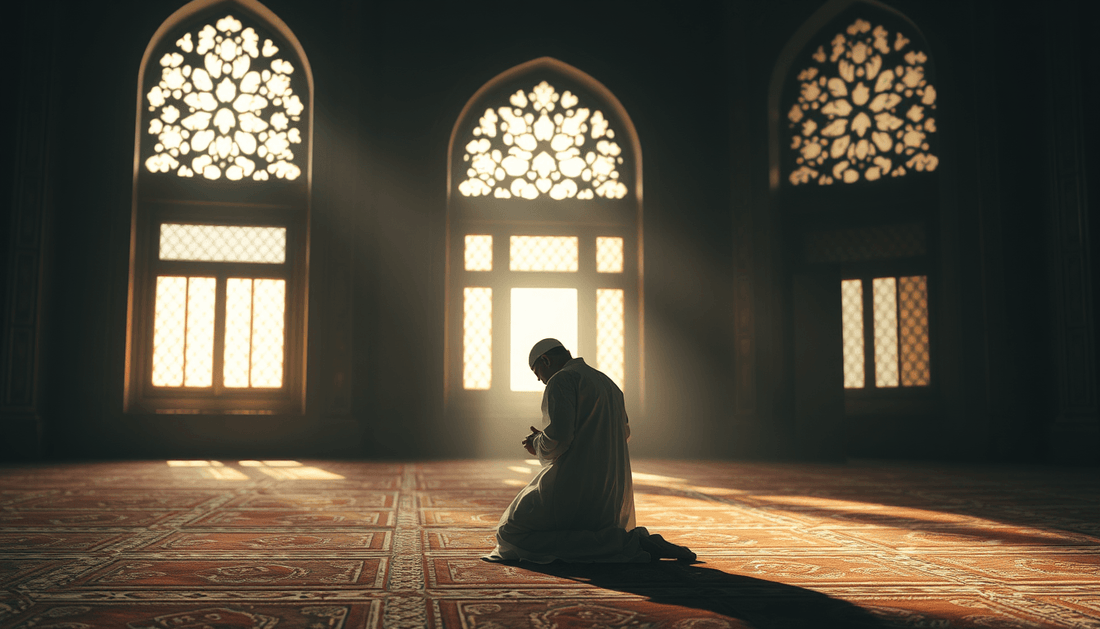

 https://sunaan.com
https://sunaan.com
